Tughlaqabad Fort was built in 1321 by Ghiyas-ud-din. Tughlaq Empire is an architectural marvel and a part of Delhi’s long life history. It was designed as a great walled city to function as the capital for Tughlaq’s rule following the ruler’s ideal of being an elusive fortress. The fort covers about 6.5 kilometres and has colossal rock walls, terrifying bastions and identical narrowing passages representing military strategic planning during that time. However despite, its splendour Tughlaqabad Fort has had brief prominence due to stories about a hex and subsequent wilderness.
Tughlaqabad Fort Location
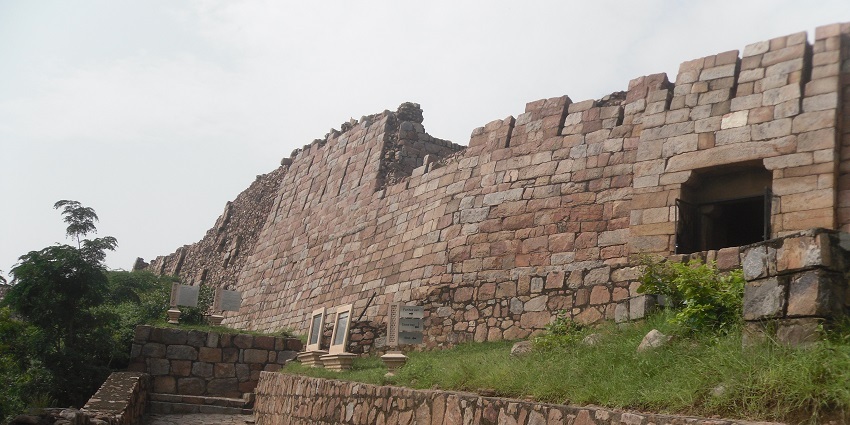
Photo: Nishant88dp / Wikimedia Commons
Tughlaqabad Fort lies in the southern region of Delhi, India on Mehrauli-Badarpur Road. This fort is located on high and desolate Aravalli hills about 20 kilometres from Connaught Place, considered the centre of the whole city.
Suggested Read: Forts In Delhi To Explore Rich History And Architectural Legacy
How To Reach Fort
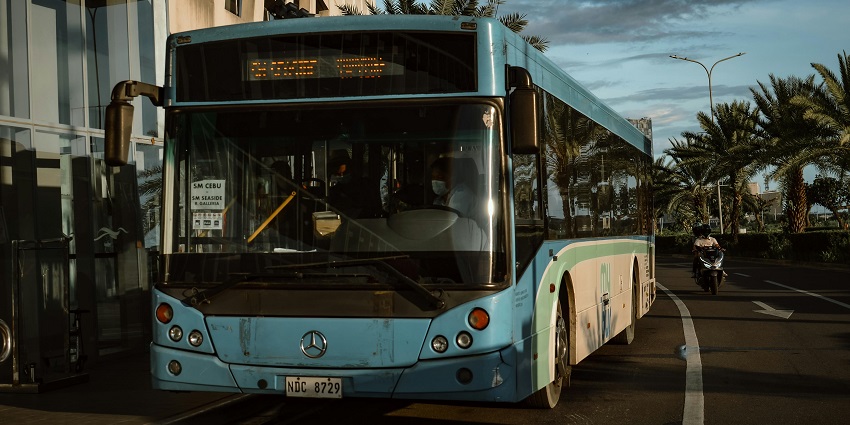
Photo: Amiel Joseph Labrador / Pexels / Image For Representation Only
By Rail: Hazrat Nizamuddin Railway Station is the closest station located approximately fifteen kilometres from the Fort. After that, visitors can hire either a taxi, auto-rickshaw or any other cab service for cruising straight to the fort. In addition, the neighbouring metro railway station is Tughlaqabad on Blue Line which connects with various local modes of transport.
By Air: Indira Gandhi International Airport is the nearest airport, situated at a distance of about twenty-three kilometres away from Tughlaqabad Fort. Taxis, app-based cabs, or airport shuttles are available for direct transport to the fort upon arrival at the airport.
By Road: Tughlaqabad Fort is positioned on Mehrauli-Badarpur Road. The Fort has proper linkages to the main roads and is reachable using auto-rickshaws, taxis or buses.
Places To Visit Near Tughlaqabad Fort
1. Ghiyas-ud-din Tughlaq’s Tomb
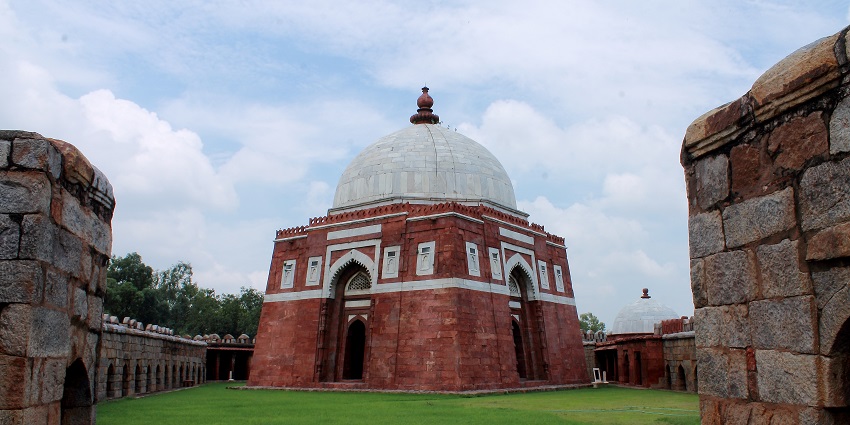
Photo: Pallav87 / Wikimedia Commons
Ghiyas-ud-din Tughlaq constructed his tomb beyond Tughlaqabad Fort, which is an exquisite architectural work completed in 1325. This huge structure has tall walls serving as its perimeter and brings out the Indo-Islamic style through its prominent use of red stones and white marble. Atop a raised base there lies this mausoleum consisting of one main dome that is encircled by smaller turrets making it look like a fortified space.
Major Attractions: Tughlaqabad Fort, Ghiyas-ud-din Tughlaq’s Tomb, Bijai Mandal, Step-Wells
Best Time To Visit: October to March
Entry Fees: ₹25 per person for Indians, ₹300 per person for Foreigners, Free entry for children under 15
Ideal Trip Duration: 2 to 3 hours
Nearest Station: Tughlaqabad Metro Station
Suggested Read: Top Places To Visit Near Qutub Minar On Your Next Trip To Delhi
2. Qutub Minar

Photo: IM3847 / Wikimedia Commons
Qutub Minar, a world heritage site recognized by UNESCO, is the globe’s tallest intricate minaret made of brick that rises to 73m in height. Built in the 12th-century period during Delhi’s reign over India, it is one artistic representation of Indo-Islamic architecture. Some other highlights in the Qutub Minar area are the famous Iron Pillar, Alai Darwaza Gateway and Quwwat-ul-Islam mosque. This place brings forth both intricate carvings and historical value that make it appealing to people who love history.
Major Attractions: Iron Pillar, Alai Darwaza, Quwwat-ul-Islam Mosque, Tomb of Iltutmish
Best Time To Visit: October to March
Ideal Trip Duration: 1-2 hours
Nearest Airport: Indira Gandhi International Airport (~15 km)
Nearest Station: Qutub Minar Metro Station (~1 km)
3. Lodhi Gardens
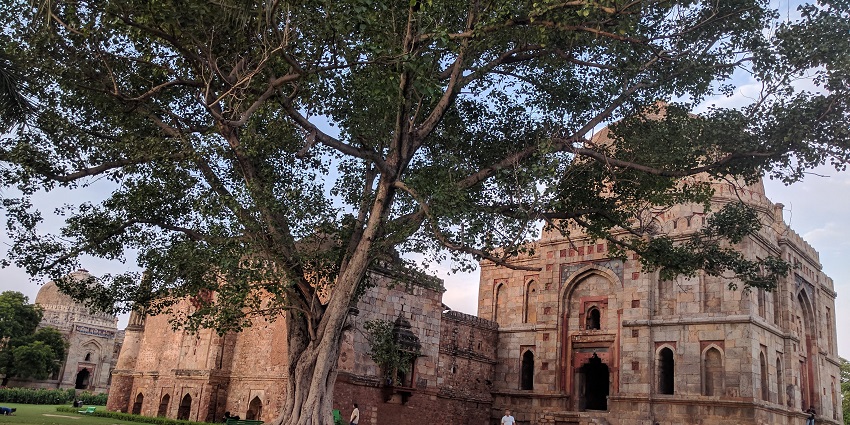
Photo: DiplomatTesterMan / Wikimedia Commons
Lodhi Gardens is a park characterized by tombs belonging to the Lodhi dynasty. It was built during the 15th century. Among its greatest attractions are the tombs of Sikandar Lodi, Bada Gumbad and Shisha Gumbad. These gardens with their meticulously kept lawns and architectural designs of ancient Mughals serve as some of the most serene oases ever created.
Major Attractions: Tomb of Sikandar Lodi, Bada Gumbad, Shisha Gumbad, Sikandar Lodi’s Mosque, Landscaped Gardens
Best Time To Visit: October to March
Ideal Trip Duration: 1-2 hours
Nearest Airport: Indira Gandhi International Airport (~20 km)
Nearest Station: Hazrat Nizamuddin Railway Station (~4 km)
Suggested Read: Places To Visit In Delhi For Fun To Enjoy A Thrilling Time
4. Jantar Mantar
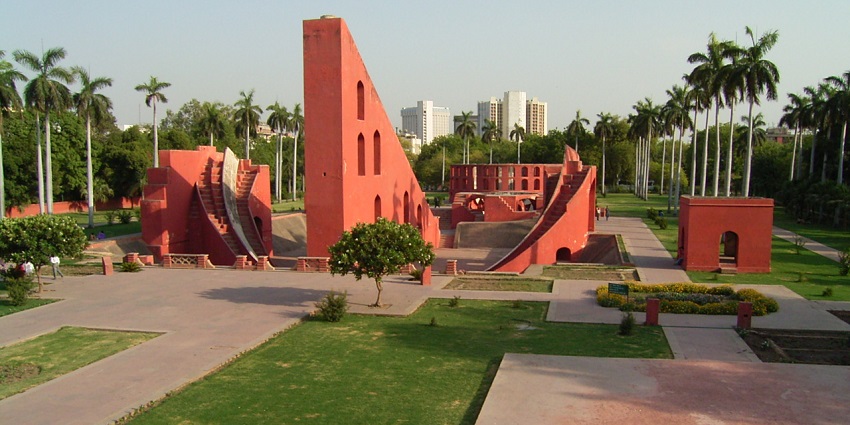
Photo: A.winzer / Wikimedia Commons
Delhi has an 18th-century astronomical observatory known as Jantar Mantar which is famous for its stunning array of architectural devices that Maharaja Jai Singh II once designed. Among this UNESCO World Heritage site are things like Samrat Yantra- the biggest stone sundial globally- together with other hardware that serve both celestial observation and timekeeping purposes. It opens up a window into some of the most advanced scientific knowledge during its time in history.
Major Attractions: Samrat Yantra (Largest Sundial), Jaiprakash Yantra, Rashivalaya (Zodiac Signs), Hemispherical Sundial, Chakra Yantra
Best Time To Visit: October to March
Entry Fees: ₹50 for Indian Citizens, ₹200 for Foreign Tourists, and Free for children below 15 years
Ideal Trip Duration: 1-2 hours
Nearest Station: Jaipur Metro Station
5. Lotus Temple
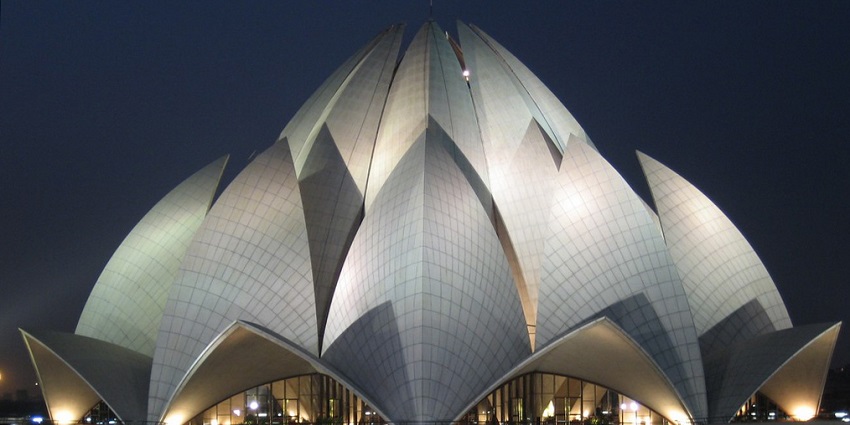
Photo:Vandelizer / Wikimedia Commons
The Lotus Temple is an extraordinary architectural masterpiece known for its stunning design that resembles a lotus flower. This Bahá’í House of Worship, situated amidst peaceful gardens, encourages people belonging to different religions to come together and meditate. The sacred place’s white marble petals represent sacredness and togetherness. The calmness found inside this temple creates an environment conducive for one to reflect on his/her spirituality issues peacefully. The temple is open for visitors throughout the week, except Mondays.
Major Attraction: Iconic lotus-shaped architecture and peaceful ambience for meditation
Best Time To Visit: October to March (cooler weather)
Entry Fees: Free
Ideal Trip Duration: 1-2 hours
Nearest Station: Kalkaji Mandir (Violet Line)
Suggested Read: Some Must-Visit Places To Visit Near Lotus Temple
Where To Stay
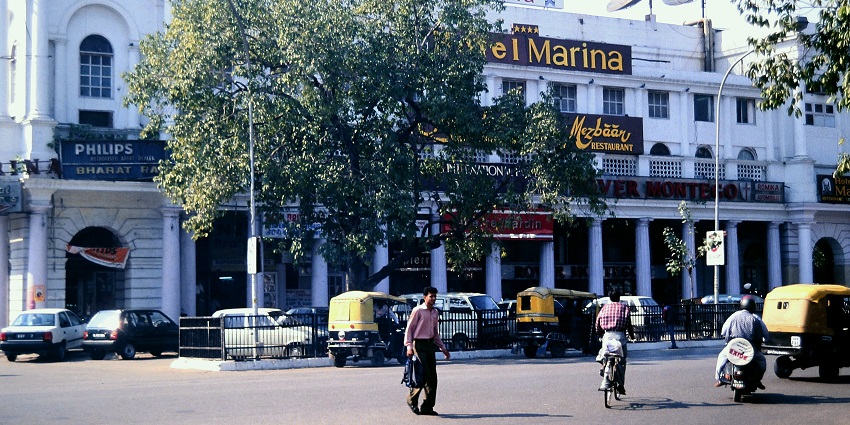
Photo: Chrisi1964 / Wikimedia Commons
Visitors going to Tughlaqabad Fort can locate different lodging alternatives tailored for various financial capabilities. For opulent accommodations, Suryaa and Eros Hotels located along Nehru Place offer top-notch facilities and are approximately 10-12 kilometres away from the Fort. Mid-range choices comprise FabHotel, Anutham Nehru Place, and Hotel Kastor International providing pleasant stays.
Where To Eat
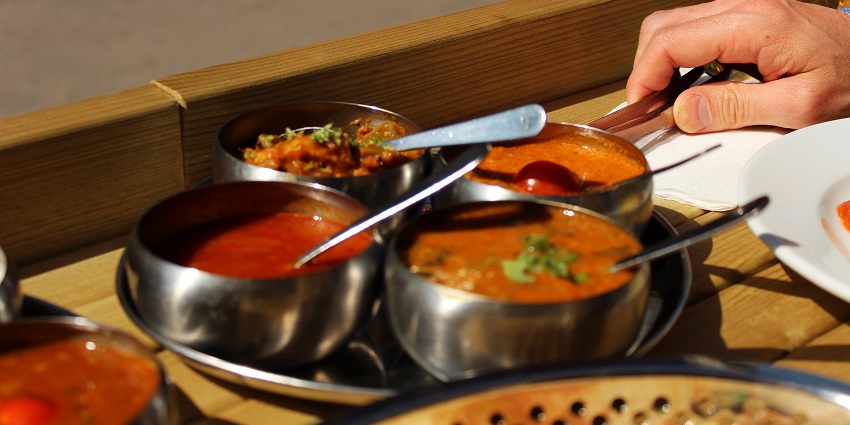
Photo: Nahid V / Wikimedia Commons
Tourists can choose from a wide range of eating places. The Yum Yum Tree in New Friends Colony, ten kilometres away, is one of the best North Indian restaurants. In the same area, Al-Bake has distinctively exotic shawarmas and kebabs. For people who want to have their meals in an informal atmosphere, Moti Mahal Delux in Greater Kailash serves delicious butter chicken and tandoori items.
Suggested Read: Amazing Places For Late Night Street Food In Delhi To Munch On
Best Time To Visit
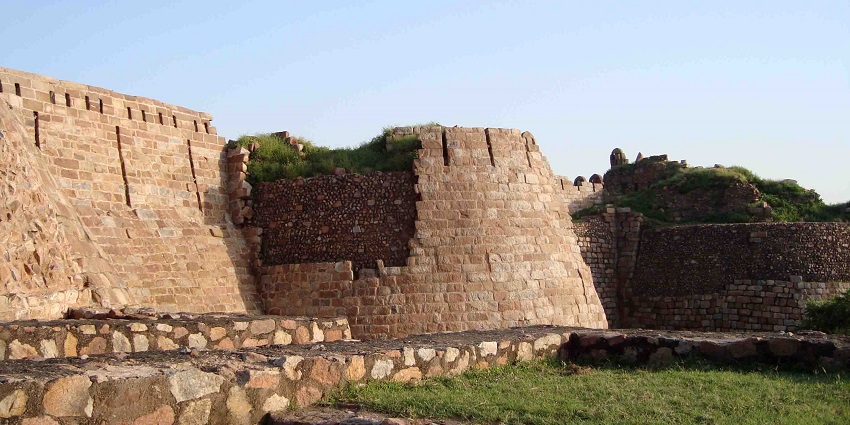
Photo: Anupamg / Wikimedia Commons
From October until March, cooler months are the best time to visit Tughlaqabad Fort as the weather in Delhi is pleasant and it is ideal for exploring the complex. The temperature during months ranges from 10°C to 25°C which makes walking around, enjoying gardens, exhibitions and water shows comfortable.
Other Factors To Consider
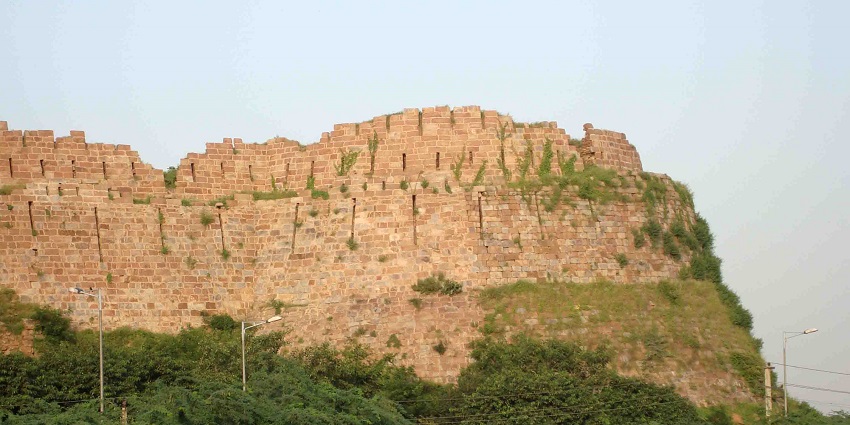
Photo: Anupamg / Wikimedia Commons
Here are some factors to consider while visiting Tughlaqabad Fort.
Average Cost Of Trip
Entry charges are very low, about ₹25 for Indian citizens and ₹300 for foreign tourists. The local transport costs can vary from ₹200 to ₹500 depending on where you start from, such as taxis or metro train rides. Dining in restaurants nearby will range between ₹300 to ₹800 per head. Thus excluding accommodation it could cost you between approximately ₹800 to ₹1500 per person for a budget trip.
Tips For Travellers
- For the most assuredly delightful weather to go to Tughlaqabad Fort, try scheduling your trip from October to March which is usually the winter months.
- Always have on hand some water bottles when taking these tours especially if it’s hot outside; it will help keep your body hydrated and prevent dehydration.
- Opt for local taxis or auto-rickshaws. One can also rent bicycles to move conveniently.
- Sunscreen, glasses and hats are essential for protection against sun rays.
- Ensure you have enough cash, as not all places accept credit cards.
- Pay attention to your belongings and always leave your valuables in designated locker rooms.
- Avoid secluded places at night.
Suggested Read: Things To Do In Delhi With Friends To Experience The Best Of The Capital City
Plan your visit to the Tughlaqabad Fort today and learn about the rich history and beautiful architecture. If you are a history aficionado, nature enthusiast or just looking for a calm holiday then Tughlaqabad Fort and its nearby attractions have something for everyone. Plan your trip with TripXL for a memorable experience.
Cover Photo: Anupamg / Wikimedia Commons


 WhatsApp
WhatsApp
 Twitter
Twitter









